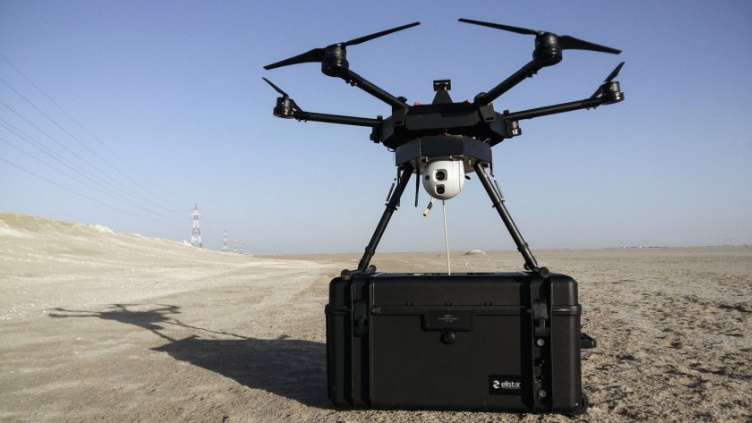El US Army avanza en la obtención de un tipo de UAV liviano, que pueda funcionar anclado en posiciones estáticas de vigilancia por 24hs y que disponga de la capacidad para adquirir blancos y “marcarlos” con Laser, permitiendo así el guiado de munición inteligente, disparada desde sistemas de armas que no pueden observar la zona objetivo.
The US Army is looking to acquire tethered unmanned aerial vehicles (UAVs) to laser-designate ground targets from stand-off distances.
A solicitation posted on 24 April by the Department of the Army calls for information on a tethered-UAV that can be used by Air National Guard (ANG) Special Tactics Operators (STOs) to observe and engage hostile ground forces using laser-guided weapons from greater stand-off distances.
“The required product will allow STOs to develop tactics, techniques, and procedures for observing and engaging hostile forces with low-collateral, long stand-off, laser-guided weapons fired or released from weapons systems that are unable to self-designate and expedite targeting for systems that can self-designate but have not yet identified a target’s location,” the request for information (RFI) noted.
Performance standards for the tethered UAV set out in the RFI comprise the ability to reach 200 ft above ground level (AGL); 24-hour flight on a 2 kw or smaller generator; a 5 lb (2.3 kg) payload capacity; AES 256 encryption of the UAV control and video data; ability for open architecture use of the UAV’s onboard computer; gimballed camera with co-witness laser designator capability of 30 mj or better, laser spot tracker, and laser rangefinder (which would reduce the 5 lb payload); the ability to generate target co-ordinates; an untethered communications link range of 8 km or better; remote handoff capability desired; an untethered flight duration of at least 45 min with 3 lb payload; autonomous delivery capability of 4 lb; multiple hot-swappable payloads and batteries (ability to change payload and batteries without powering down); the ability to operate in high winds of more than 40 mph (64 kph); the ability to operate in precipitation- industry standard IP54 or better; a temperature capability of -10°F to + 120°F (-23°C to 49°C); a hover capability and forward flight speed of 35 mph or better; target recognition artificial intelligence (AI) capable for people and vehicles; an Android Team Awareness Kit (ATAK) integrated plugin; and the ability to operate and navigate in GPS and radar-denied environments.
Fuente: https://www.janes.com


